The Wales International Documentary Festival: A Film Critic’s Diary
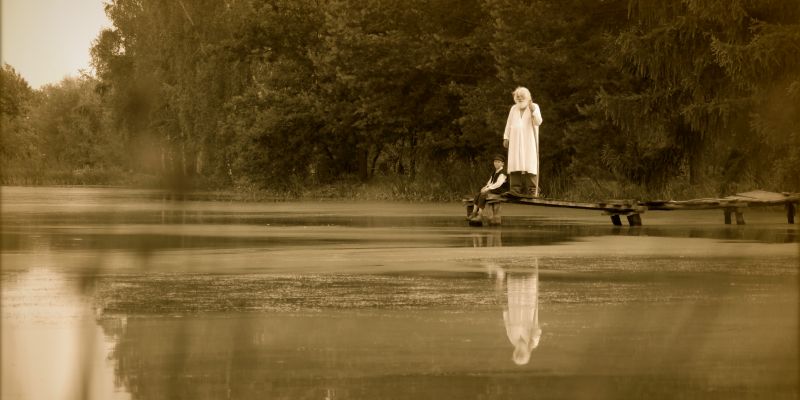
I love film, more than people probably, and I will…
This year saw the very first Wales International Documentary Festival, which ran from 12th-14th May in the valleys of South Wales. Blackwood, to be more specific, north of Cardiff, and the home of the band Manic Street Preachers, the boxer Joe Calzaghe and the Dream Alliance race horse syndicate. They are, in fact, the very reason why the WIDF has found its home here.
2015 saw the release of three feature documentaries based in the Blackwood area. Mr Calzaghe (about the undefeated boxer), No Manifesto (about the success of the Manic Street Preachers) and most importantly Dark Horse. A documentary by Louise Osmond that went on to win the Sundance Audience Award for Best World Cinema Documentary and the British Independent Film Award for Best Documentary. Furthermore the town has had a small but important success recently with the resurrection of the old beloved Maxime cinema, on the high street. Pairing this with the Blackwood Miners Institute history and success as a cinema/theatre you would think there was enough in place to pull off a small but interesting film festival.
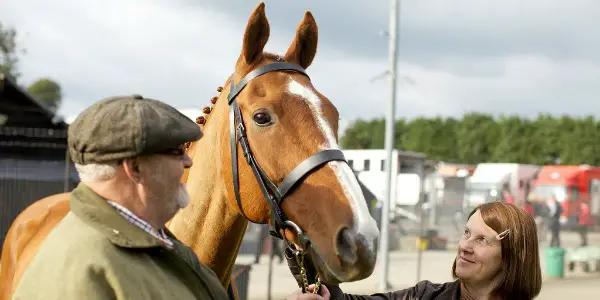
Me, I wasn’t so sure. To put you in mind of how I saw this let me digress with a little personal detail. I’m a film postgraduate and I live in a town called Caerphilly, between Cardiff and Blackwood. My great-grandparents lived on Blackwood high street, in fact, my grandmother and my mother were both born there. I feel I have a pretty good idea about where I’m from and where I live and the idea of putting on a film festival in Blackwood seemed like a strange one to me. Inaccessible by train, but accessible by bus, albeit it a very long bus journey from Cardiff, and arranged in a town where I got the feeling feature documentaries weren’t high on most people’s agenda it seemed like a bad idea actually.
The Welsh valleys are rife with health problems and unemployment, here people really do use film as an escape. And a film festival that was putting on films from the rest of the world? Featuring other people’s problems? That didn’t sound ideal. But you can’t ever properly assess something until you’ve experienced it for yourself, so that’s why I spent three days watching more documentaries than most, to see what it was all about.
Day 1: Started Badly, Ended Well
Even before I turned up on Thursday I had mixed feelings. The online programme hadn’t given synopses for the competing films and though some events were on the public programme they appeared to be (and some definitely were) invite only, for industry professionals. My confusion was compounded when I arrived at the Blackwood Miners Institute on the first day of the festival, not only to find that the passes were inaccessible to the volunteers, but wherever I was supposed to register didn’t really exist.
The volunteers were a sharp, chirpy sort though; documentary students from Newport. They managed to unite me with a pass and I decided to hang around for the careers fair, starting at 10am. At 10.15am they were still setting up, so I decided to pack it in so I could make it to the first film. I was there for the films after all and so I trotted off down to the Maxime cinema, which would be my home for the next two days.
West Empire is a short film about the lives of the people who live on outposts around California and Nevada. There is something quite tranquil about the film. Filmed in the style of a National Geographic photoshoot the scenes are long and lingering, and there is a silence about the homes of the film’s subjects that is mesmerising. In turn each of them talk about what the silence and the solitude affords them, a sense of calm and awe. Some of the people are incredibly smart and rhapsodise about the beauty of their lives. But you never really understand why they’re there. Are they escaping? Are they hiding? There are more questions to be asked but you are left unsated. Because of this the film overstays its welcome, and the narrative sort of falls apart in the end when you realise that these people actually live in different towns.
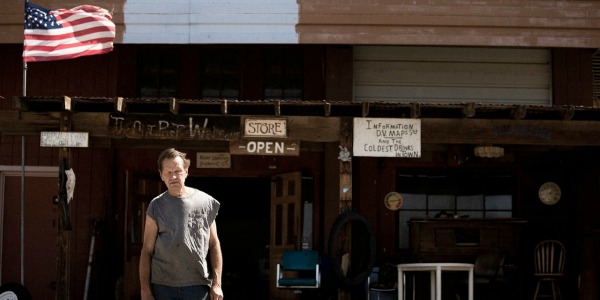
It’s unfortunate that the first feature film of the festival was the one I disliked most. The Vanished Dream purports to be about the faded hopes for Guinea-Bissau. Claiming independence from Portugal in 1973 the country attempted to start anew, building an infrastructure that they could found a whole new country on. But this film isn’t really about Guinea-Bissau, it’s about the Swedish aid workers who went to work there.
At first I thought the interviews with the aid workers were an access point, a start to the narrative, about how optimistic things had once seemed, before moving on to the Guinean people. But the whole film is about the idealism of a bunch of white Westerners and what they had done to help the people of Guinea-Bissau. Whilst also flagrantly alluding to how their good work was ruined by further infighting between the Guinean people. It was self-congratulatory, entitled, and I don’t believe for a second these educated white people really understood the plight of the Guinean people. I found it narrow minded and ultimately quite boring.
Luckily for me I then ran off to something a lot more interesting. A masterclass by the Gorilla Group, a major post-production company based out of Cardiff, who work with a number of successful production companies. The managing director Richard Moss was informative and erudite and was keen to explain all the ways a post-production company can work; involving themselves in the pre-production by advising on camera equipment and techniques, working to tight deadlines for topical stories, coming in at the very end of projects to clean up footage.
It was incredibly interesting to learn about how camera usage and memory storage has changing over the years. With drones, add-ons, and smaller storage hardware now available. His colleague Paul Owen (operations manager for Gorilla) was equally as knowledgable and pleasant, and it’s just a shame I didn’t get to meet them in the careers fair. Which was over by that point, or at least some people thought it was over, some thought it was still going. I was too hungry at this point to go and check.
After a long and leisurely lunch break I was feeling a bit more optimistic. After all I was going to spend a few days watching films, drinking coffee, and the Gorilla talk at least had been very eye-opening. My good mood was improved when I returned to the cinema to see the Norwegian short Beyond The Pale. A film created from a number of stories it looks at and interviews people who we would regard as having ‘important careers’ (air traffic controller, judge etc.).
Talk of responsibility is combined with confessions of intrusive thoughts. A judge leaps on to a criminal, a restauranteur spits in a customer’s food, a vicar thinks about pushing his young daughters off a cliff. The intrusive thoughts are sometimes deliciously fantasised, while others worry their thinkers. While not a fully engaging narrative Beyond The Pale is a fantastic, humourous look at the importance and stresses of everyday life. Intrusive thoughts are the foundations of obsessive compulsive disorder, and although the film does not allude to the condition it does go some way to pondering the anxiety and pain it can cause.
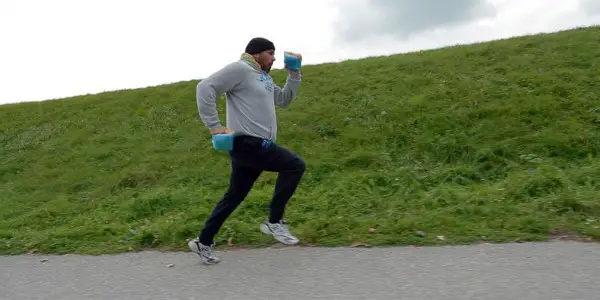
The feature that followed, the Croatian The Candidate, was something of a surprise. Starting with a local story of an election for a building manager the film gains scale as it considers a greater political conflict taking place in Croatia. The film’s protagonist, a man who would seem to have some say in this election (although we are never completely sure), is pulled back and forth between the men who would be manager until eventually deciding to run himself.
The film is made very well and reflects the political uncertainty it would seem Croatia as a whole was going through at this time. However, we are never really sure who is who in this scenario. Who is in charge, what does it mean to be the building manager, whose opinion counts? And while our protagonist is a smart, charming sort of man we are never really sure if and why he wants to be the building manager and if indeed he succeeds, as the film peters out to nothing. While it was engaging and enjoyable I felt there were just too many unanswered questions.
With time to spare I decided to stick around for the next short, the Croatian I Smoke Whatever’s Left, about a man who once worked in the media but now makes counterfeit cigarettes. He discusses his life and his reason for this crime. But no good reasons are ever offered or any depth revealed. Because we never learn much about him, or even see his face, we don’t connect with him or his plight. It was overall, quite forgettable. I went home, missing that night’s Gala Screening (I Believe In Miracles) and party.
Day 2: If You Watch Enough Films You’ll Find A Good One, Or Four
There were quite a few events on day two, but as I learnt through pieces of information sent in various emails, all of them were invitation only. Which begged the question; why they were on the public programme? Also, what good was it doing the people of Blackwood when it didn’t involve them at all? To be fair I could have gone to the micro-docs screening, but it clashed with a film. I could have also gone to the networking event but by this point I felt like a bit of an outsider.
It was on the second day that I really began to appreciate the choices the film festival had made and how they had programmed the films on show. They were from a number of different countries, showing a great variety of people from different walks of life. They had also included a good number of female directors, were showing shorts (which can be missed or maligned by the general public), and were pairing these shorts with features that contained similar themes. On programming I cannot fault the WIDF at all.
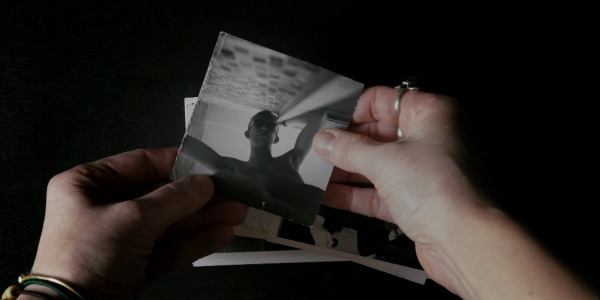
The first film I saw that day was a short called The Third Dad. Beginning with a quote from Carol Reed’s The Third Man the film centres on the story of the filmmaker Theresa Moerman Ib as she takes a journey to find her father’s grave. He had been an alcoholic, and as such Ib had found her relationship with him difficult, cutting ties with him years before. The film is beautifully edited. Contemporary footage, old home movies and family photographs are pulled together and creatively manipulated so as to enhance the atmosphere of the story. Paired with Ib’s narration, this creates an emotional, cohesive but also visually stunning story. It was one of my favourite films of the festival so far.
This was followed by the feature; Always Together. A film from the Czech Republic, it tells the story of Petr. An educated man that chooses to live with his wife and nine children on the side of a hill, in a makeshift building with no modern amenities. With no job, and reliant on the state, his children are close to the poverty line. Petr is an interfering, controlling man, and you feel his children’s lives, and most obviously their social development, is suffering because of it. The film is interesting and I appreciated the way director; Eva Tomanová, didn’t shy away from showing the awkwardness of the encounter. But at the end of the film I was left with so many questions. Luckily Tomanová was there, as was Amy Hardie (the director of the next feature), who had exactly the same questions as me.
The film lacks interviews with many of the children and, as Tomanová explained, she had been unable to gather opinions and thoughts from them because they were incapable of socialising with her. Petr had acted like something of a spoilt child and it had been difficult for her to shake him. Meaning that in the film it seems like Petr is actually interfering with the children’s interviews when, she says, they actually wanted him there. Also, misunderstandings about who the father of Petr’s grandchild is and why his mother-in-law had turned up at the house had to be cleared up.
There is a suggestion in the film that incest had taken place, when in fact the father was just camera shy. Also, Petr’s mother-in-law, who shows up so surprisingly, had been invited by Tomanová. When a filmmaker has to explain all of this then it wasn’t obvious in the film. She also shouldn’t have invited the mother-in-law, what documentarian interferes like that? It was an interesting insight into what happens during the editing process. Tomanová had clearly tried to do certain things but when they hadn’t worked out she hadn’t sought to include an explanation in the film. As it stands now, the film only makes sense if you have her around to explain it to you.
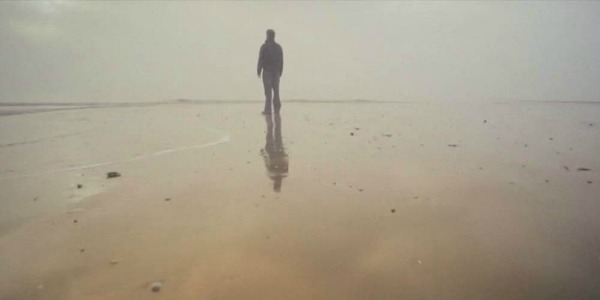
The next short was another of my festival favourites; Clare Sturges’ My Brief Eternity. Made in partnership with the Maggie’s charity the film is about the late great Welsh artist, Osi Rhys Osmond. Osmond is embarking on a painting he wishes to remain unfinished. As he prepares the work he talks about what he wants to create and what he wants it to represent. He then diverges, but does not simply discuss his illness and impending death. Osmond speaks of our existence, the evidence we leave behind and our place in the history of the earth. His voice echoes over stunning visuals of a solitary man on the beach, or in the fields. It’s incredibly engaging and inspiring. His words put me in mind of John Green’s ‘little infinities’. The fact that we are here all too briefly but the time we experience and the time the memory of us lasts is inquantifiable. It was a beautiful film.
The next feature was the Glaswegian Seven Songs For A Long Life by director Amy Hardie. The film purported to be about how important music was to the patients of a hospice she visited. But while the film was an interesting look at how hospices really worked and how people can make it through illness, the music element I felt was crow-bared in and had little to do with the people themselves.
Also, Hardie had introduced the film by reiterating the lack of wealth and the poor life spans of people in this part of Glasgow. But it was never addressed in the film. The whole documentary was just a bit 2-dimensional, gaining depth only when it played on the upsetting idea of death. I was a bit annoyed, frankly, when the titles rolled with announcements of the people who had since died. Because I was compelled to cry, not because the film touched me in anyway, but because of the lives that had been lost. It was as though Hardie was leaning on my emotions and not her filmmaking skills to make an impact, and I didn’t appreciate that. Hardie had a workshop to follow, but by this point I was too tense and too hungry to even think about talking about death with a bunch of strangers.
I didn’t really calm down over lunch, there’d been a lot of films about death that morning, also I was super cold from the cinema’s air conditioning. Which James had fixed by the time I went back. It’s worth saying at this point that James and Ben, who worked for the Maxime cinema, were superb. James answered all my questions about cinema projection, and the two of them were great company. Importantly I was missing the film playing that lunch time not just because I was hungry but because I had been unable to find a synopsis online, and importantly it was missing from the festival programme. When I returned to the cinema it still hadn’t finished and I had to wait 30 minutes for the next film to start, I was not impressed. But then you never who you might meet.
I was sitting all alone when a lady came in asking if she was in the right place. She sat down and we started chatting. Our conversation was cut short as we realised she was actually in the wrong place, but I did have time enough to learn about the film company she represented and that she was there with My Brief Eternity. I told her how much I loved it, and she thanked me and gave me her details before she had to run. I later figured out she was Clare Sturges, the director of My Brief Eternity. Like I say, you never know who you might meet.
The next short; Bubo’s Limbo, I’m not sure I really understood. About a retired man, the film makes excellent use of archive footage and music. But while it was sort of fun to watch I took nothing away from it. It seemed to have little in the way of a point. (I later discovered that it’s supposed to be about a man living through the rise and fall of communism.) It’s paired feature though, The Roots Remain, I had been looking forward to and it didn’t disappoint one bit.
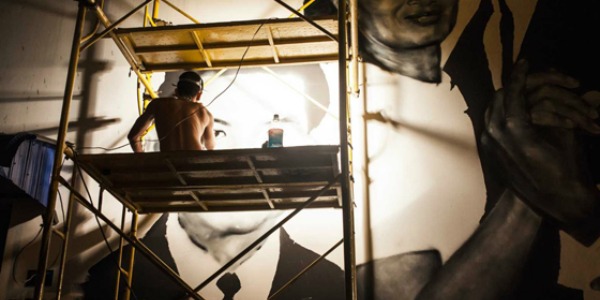
The Roots Remain is about the Montreal street artist Fonki, a descendant of Cambodians who left during the 1970’s genocide. Fonki goes to Phnom Penh to create a mural memorialising his family. But also to learn more about the country, the youth bringing music and art to the city, and the history of what drove much of his family out. The Roots Remain is a deeply engaging documentary and Fonki makes for an interesting protagonist as his ‘youthful’ optimistic energy is shown in sharp contrast to the trauma the country suffered. You always feel like you want to know more about what happened to his family, but it is made clear they are still hurting from the events of 40 years ago. This very fact makes the documentary all the more poignant and brings to light the history that so many of us should know more about.
At this point in the evening I think I was the only person in the cinema. A couple had left after Bubo’s Limbo and though I heard people come in and out, I’m not sure anyone stayed long. The film that followed, Memories Of War (a short from the UK), was not very good at all. It intercuts the image and poetry of former soldier, now teacher, Ed, with dramatised scenes of soldiers sitting in a truck. Ed seemed interesting, his story seemed very interesting, but the dramatisations just ruined the whole thing.
The last feature of the day was Hot Men Cold Dictatorships, a film about the lives of the gay community in contemporary Hungary. The film starts off with footage of a gay pride march, cordoned off, and heckled with homophobic slurs. This is the starting point, director Mária Takács (who had yet to properly come out at the time of its making) and his friends bemoan how bad their lives are because of this treatment. But their curiosity is piqued by the idea of what it must have been like under the Communist regime.
So Takács recruits a bunch of seniors, all gay men, and (keen to hide his identity) encourages his friends to interview them and experience the places they visited under the regime. The film is brilliantly touching and fun as these young men immerse themselves in the histories of the older. While I was a little disappointed with some bad special effects toward the beginning, and I was never sure I really understood who was who, and indeed how they knew each other (of this group of older men at least two were a couple, another two were married), I found it incredibly engaging and really eye-opening. I’m so glad I stuck around for it. I then went home and missed that’s night’s Gala Screening and party, again.
Day 3: Hanging On
Saturday morning started off weirdly. The registration desk had been relegated to the top floor of the Blackwood’s Miners Institute and I became aware that I was one of the last people standing at this festival. Here I came face to face with one of the organisers, apparently I’d created a bit of a reputation for myself and had become the festival’s de facto fan. Which I felt a bit odd about because I was there because of what I consider to my job. But I agreed to an interview later on, signed up for that day’s masterclass and quick marched it back down to the safety of the Maxime, where I was pleased to find at least about five other people in the cinema with me.
The first short, Taklif, was made by filmmaker Maryam Tafakory, who also starred in the film. She discusses her and her friend’s relationship, she alludes to what I understand to be some sort of religious ceremony. I feel as though it is generally about the experience of Islamic girls as they grow into womanhood. But while the film is visually intriguing because of the way it juxtaposes footage of Tafakory; combing her hair, putting on her head scarf, I’m not totally clear what is it about, and as it repeats itself the point actually becomes more confused and less defined. Admittedly, I lost interest in it quite quickly.
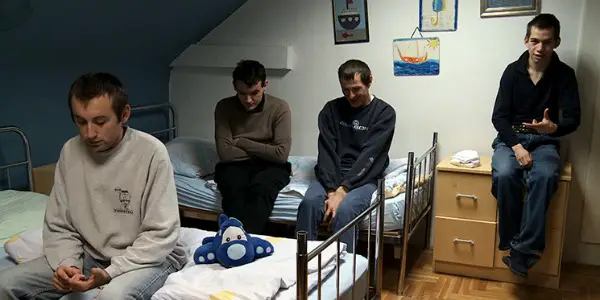
The next feature; Free, a Croatian film about a group of people with learning difficulties being released into independent living, didn’t really have much to say. The film is a genuinely good recording of events as they progress, but that’s about it. Occasionally we hear a little more about what these people want from their homes or their futures, but I feel enough wasn’t done to explore their origins and who they are as individuals. It was as though the filmmaker thought they were incapable of these depths and chose not to press ahead. That was very disappointing.
While I was stretching my legs between films a man in the front row stared at me. He’d entered late and had made a great show of plonking himself in the middle of the front row, and noisely pulling a script out of his bag and reading it. I didn’t really want to talk to him, but he was staring. So I just said hi. He said hello. I didn’t like him. I was later told that he was an ‘important cinematographer’. Film festivals are odd places, I find that people expect you to disregard people’s demeanours because of their supposed talent or fame. I don’t like it.
Djinns; Spirits Of Patras (a short) tells the story of a group of Afghan men as they hide and wait near the Greek port of Patras, attempting to escape on the boats. A film like this should have a lot to say. But you never really learn about the men, and when the film gets to the point of why they are there it is far to late in the narrative. The Djinns of the title, the dark spirits, are something of an afterthought. There is so much potential here but it isn’t explored, which is a great shame for a film that could have had made such an important, contemporary, impact.
One film I had really been looking forward to in the festival was this last one, a Polish feature; The Touch Of An Angel. The film tells the story of Henryk Schoenker. An old man, he survived the holocaust even though, disturbingly, his hometown of Oswiecim became what is now known as Auschwitz. Schoenker’s father was the leader of the Jewish community in their town and, it would seem, a great effort was made to enable the mass emigration of Jews. But when they were turned down by most of the world’s countries the town became nothing more than a collection point for the Jews that would eventually be killed in the Auschwitz camp.
Schoenker’s story of how his family escaped death is an intriguing and engaging one. On the run for most of the war they were in and out of ghettos before ended up in a camp, then on the death marches. The problem is with this film, and there’s a big one, is that Schoenker’s story is spliced together with awkward, badly made special effects and dramatisations. Instead of doing extra research, finding evidence of what occurred and perhaps looking at the numbers of people who had applied to emigrate, who had turned them down, and how many of those people had perished in Auschwitz, the film chooses to waste its time on these awful additions. It’s a real shame, because Henryk Schoenker has an incredible story which he tells very well, but the production of this film undermines it.
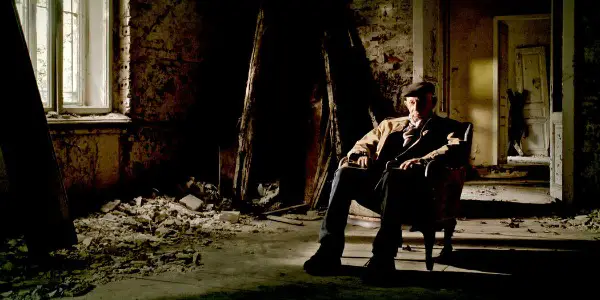
My last port of call was an editing masterclass I knew I was already missing. The class was with editor Ariadna Fatjó-Vilas (The Act Of Killing) and she was interesting and insightful, and quite charming. But after a while I felt like I had learnt everything I wanted to know and I was hungry, so I tried to sneak out. I snuck out quite successfully actually before I bumped into the sweet festival organiser and was ushered into doing an interview.
While I was waiting I found that someone had added my name to the masterclass sign up sheet for the ‘important cinematographer’. Which was annoying because their email on the event has confused me in a number of ways, I had turned them down a couple of times already that day, and I wasn’t sure they actually even remembered my first name let alone my last.
I was happy to do the interview (even though I was having a bad hair day) because there was a lot about the films and the people doing the masterclasses that I had liked, and that’s what I stuck to. But there’d been a lot of teething problems, they really need to work out how to get more people to the festival, they need to work out exactly how they think this is helping the people of Blackwood, and at the very least they need to get someone to proofread their programme.
I didn’t really have a chance to say this to them, because they were (seriously) incredibly nice people and I could tell they didn’t want to hear the negatives right then and there. I said my piece and went home, where I found a new copy of my local newspaper with the WIDF prominent in its ‘What’s On’ section. It had arrived that day, just a few hours before the end of the festival, so much for local publicity. Of course, I missed the awards ceremony that night. I discovered via twitter that The Roots Remain had won Best Feature but that Best Short had gone to Taklif, you can’t win them all I guess.
The Little Film Festival That Maybe Could
It was a sort of strange experience, being the sole observer on a lot of what happened at the film festival. I think they thought I was just an enthusiastic film watcher with not much else to do. They do know I wrote for a film website, but besides encouraging me to tweet etc. I don’t think they really considered it. They didn’t really imagine I would be looking so closely and considering everything so deeply, which has made writing this as strange as it was being at the festival itself.
I do think that the people who organised the WIDF have their hearts in the right place, and they were honestly some of the nicest film festival people I’ve ever met. The films I watched and the talks I saw were surprising and exciting, and it’s a great idea, to bring all these different films to a town that is just the right size for such a festival. But that’s not enough. Location, transport, communication, admin, these all mean something too. Luckily for them I’ll put up with a lot to see a film, but other people won’t.
Does content like this matter to you?
Become a Member and support film journalism. Unlock access to all of Film Inquiry`s great articles. Join a community of like-minded readers who are passionate about cinema - get access to our private members Network, give back to independent filmmakers, and more.
I love film, more than people probably, and I will watch pretty much anything. Seriously, anything! I have a postgraduate education in film & have spent an exceptionally long time trying to get inside the film industry. I'm a big believer in treating every film the same, and bringing something new to the film theory table, giving reasons for every argument made. You'll find that I'm an empathetic and fun sort of reviewer, at least, I like to think so. If I'm not watching films I'm doing exceptionally nerdy stuff, like watching documentaries about the history of medicine and collecting photos of old post boxes.













